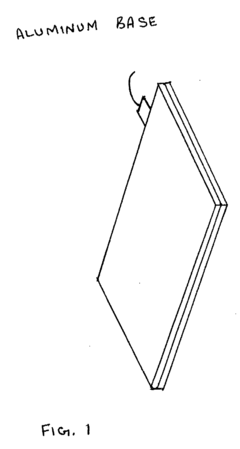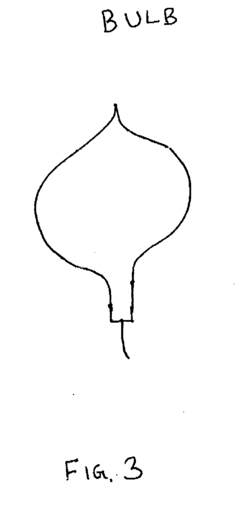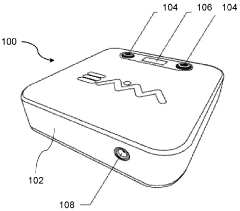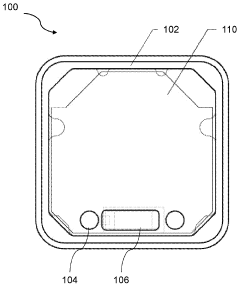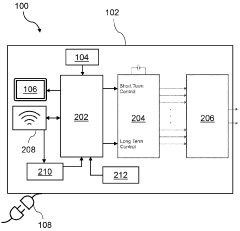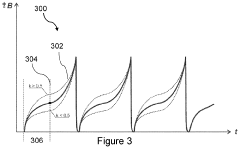PEMF Therapy and Its Evolving Applications in Human Performance
AUG 11, 20259 MIN READ
Generate Your Research Report Instantly with AI Agent
Patsnap Eureka helps you evaluate technical feasibility & market potential.
PEMF Therapy Overview
Pulsed Electromagnetic Field (PEMF) therapy is a non-invasive treatment modality that utilizes electromagnetic fields to promote healing and enhance human performance. This innovative approach has gained significant attention in recent years due to its potential applications across various medical and wellness domains.
PEMF therapy operates on the principle that electromagnetic fields can influence cellular behavior and physiological processes within the human body. By applying pulsed electromagnetic fields of specific frequencies and intensities, PEMF devices aim to stimulate cellular repair, reduce inflammation, and improve overall bodily functions.
The history of PEMF therapy can be traced back to the mid-20th century, with early research focusing on bone healing and tissue regeneration. Over the decades, the technology has evolved significantly, leading to the development of more sophisticated devices and a broader range of applications.
In recent years, PEMF therapy has garnered attention for its potential to enhance human performance in various areas. Athletes and fitness enthusiasts have explored its use for improving recovery times, reducing muscle soreness, and enhancing overall physical performance. Additionally, researchers have investigated its effects on cognitive function, sleep quality, and stress reduction.
The mechanisms of action behind PEMF therapy are multifaceted. At the cellular level, PEMF is believed to influence ion channels, membrane potential, and cellular metabolism. These effects can lead to improved circulation, enhanced oxygenation, and accelerated tissue repair. Furthermore, PEMF therapy has been shown to modulate inflammatory responses and promote the release of growth factors and other beneficial molecules.
As the field of PEMF therapy continues to evolve, researchers are exploring its potential in treating a wide range of conditions, including chronic pain, osteoarthritis, neurological disorders, and even certain types of cancer. The non-invasive nature of PEMF therapy, coupled with its relatively low risk of side effects, makes it an attractive option for both medical professionals and patients seeking alternative or complementary treatments.
However, it is important to note that while PEMF therapy shows promise, the scientific evidence supporting its efficacy varies depending on the specific application. Ongoing research aims to establish standardized protocols, optimize treatment parameters, and elucidate the long-term effects of PEMF therapy on human health and performance.
PEMF therapy operates on the principle that electromagnetic fields can influence cellular behavior and physiological processes within the human body. By applying pulsed electromagnetic fields of specific frequencies and intensities, PEMF devices aim to stimulate cellular repair, reduce inflammation, and improve overall bodily functions.
The history of PEMF therapy can be traced back to the mid-20th century, with early research focusing on bone healing and tissue regeneration. Over the decades, the technology has evolved significantly, leading to the development of more sophisticated devices and a broader range of applications.
In recent years, PEMF therapy has garnered attention for its potential to enhance human performance in various areas. Athletes and fitness enthusiasts have explored its use for improving recovery times, reducing muscle soreness, and enhancing overall physical performance. Additionally, researchers have investigated its effects on cognitive function, sleep quality, and stress reduction.
The mechanisms of action behind PEMF therapy are multifaceted. At the cellular level, PEMF is believed to influence ion channels, membrane potential, and cellular metabolism. These effects can lead to improved circulation, enhanced oxygenation, and accelerated tissue repair. Furthermore, PEMF therapy has been shown to modulate inflammatory responses and promote the release of growth factors and other beneficial molecules.
As the field of PEMF therapy continues to evolve, researchers are exploring its potential in treating a wide range of conditions, including chronic pain, osteoarthritis, neurological disorders, and even certain types of cancer. The non-invasive nature of PEMF therapy, coupled with its relatively low risk of side effects, makes it an attractive option for both medical professionals and patients seeking alternative or complementary treatments.
However, it is important to note that while PEMF therapy shows promise, the scientific evidence supporting its efficacy varies depending on the specific application. Ongoing research aims to establish standardized protocols, optimize treatment parameters, and elucidate the long-term effects of PEMF therapy on human health and performance.
Market Analysis
The market for PEMF (Pulsed Electromagnetic Field) therapy in human performance enhancement is experiencing significant growth and diversification. This emerging technology, which uses electromagnetic fields to stimulate cellular repair and improve overall health, is gaining traction across various sectors, including sports medicine, rehabilitation, and wellness industries.
The global PEMF therapy market is projected to expand rapidly in the coming years, driven by increasing awareness of its potential benefits and a growing emphasis on non-invasive treatment options. The market is segmented into various applications, with pain management, bone healing, and neurological disorders being the primary focus areas. However, the use of PEMF therapy for enhancing human performance is a relatively new and rapidly evolving segment.
In the sports and fitness sector, PEMF therapy is attracting attention from professional athletes and sports teams as a means to accelerate recovery, reduce injury healing times, and potentially enhance performance. This has led to the development of specialized PEMF devices designed for athletic use, ranging from portable units to more sophisticated clinical systems.
The wellness and anti-aging market is another key driver for PEMF therapy adoption. As consumers increasingly seek non-pharmacological approaches to maintain health and vitality, PEMF therapy is positioning itself as a holistic solution for improving sleep quality, reducing stress, and enhancing overall well-being.
The healthcare sector represents a significant portion of the PEMF therapy market, with applications in both clinical and home settings. Hospitals and rehabilitation centers are incorporating PEMF therapy into their treatment protocols for various conditions, while the availability of home-use devices is expanding the market reach to individual consumers.
Geographically, North America and Europe currently dominate the PEMF therapy market, owing to higher awareness, advanced healthcare infrastructure, and greater disposable income. However, the Asia-Pacific region is expected to witness the fastest growth in the coming years, driven by increasing healthcare expenditure and a growing interest in alternative therapies.
Despite the promising outlook, the PEMF therapy market faces challenges such as lack of standardization in treatment protocols, varying regulatory landscapes across different regions, and the need for more extensive clinical research to validate its efficacy in human performance enhancement. These factors may impact market growth and adoption rates in certain segments.
As the technology continues to evolve, we can expect to see more targeted PEMF applications for specific aspects of human performance, such as cognitive function enhancement, muscle strength improvement, and endurance boosting. This specialization is likely to create new market niches and drive innovation in device design and treatment protocols.
The global PEMF therapy market is projected to expand rapidly in the coming years, driven by increasing awareness of its potential benefits and a growing emphasis on non-invasive treatment options. The market is segmented into various applications, with pain management, bone healing, and neurological disorders being the primary focus areas. However, the use of PEMF therapy for enhancing human performance is a relatively new and rapidly evolving segment.
In the sports and fitness sector, PEMF therapy is attracting attention from professional athletes and sports teams as a means to accelerate recovery, reduce injury healing times, and potentially enhance performance. This has led to the development of specialized PEMF devices designed for athletic use, ranging from portable units to more sophisticated clinical systems.
The wellness and anti-aging market is another key driver for PEMF therapy adoption. As consumers increasingly seek non-pharmacological approaches to maintain health and vitality, PEMF therapy is positioning itself as a holistic solution for improving sleep quality, reducing stress, and enhancing overall well-being.
The healthcare sector represents a significant portion of the PEMF therapy market, with applications in both clinical and home settings. Hospitals and rehabilitation centers are incorporating PEMF therapy into their treatment protocols for various conditions, while the availability of home-use devices is expanding the market reach to individual consumers.
Geographically, North America and Europe currently dominate the PEMF therapy market, owing to higher awareness, advanced healthcare infrastructure, and greater disposable income. However, the Asia-Pacific region is expected to witness the fastest growth in the coming years, driven by increasing healthcare expenditure and a growing interest in alternative therapies.
Despite the promising outlook, the PEMF therapy market faces challenges such as lack of standardization in treatment protocols, varying regulatory landscapes across different regions, and the need for more extensive clinical research to validate its efficacy in human performance enhancement. These factors may impact market growth and adoption rates in certain segments.
As the technology continues to evolve, we can expect to see more targeted PEMF applications for specific aspects of human performance, such as cognitive function enhancement, muscle strength improvement, and endurance boosting. This specialization is likely to create new market niches and drive innovation in device design and treatment protocols.
Technical Challenges
PEMF (Pulsed Electromagnetic Field) therapy faces several technical challenges as it evolves in its applications for human performance enhancement. One of the primary obstacles is the lack of standardization in treatment protocols. The optimal frequency, intensity, and duration of PEMF exposure vary widely depending on the specific condition being treated and individual patient factors. This variability makes it difficult to establish universally effective treatment regimens and complicates the process of conducting large-scale, reproducible clinical trials.
Another significant challenge lies in the design and manufacturing of PEMF devices. Creating devices that can generate precise and consistent electromagnetic fields across a range of frequencies and intensities requires advanced engineering. Ensuring these devices are both effective and safe for long-term use adds another layer of complexity. Moreover, miniaturization of PEMF technology for portable or wearable applications presents additional technical hurdles, particularly in terms of power management and field generation in compact form factors.
The biological mechanisms underlying PEMF therapy's effects on human performance are not fully understood, which poses a challenge for optimizing treatment protocols. While studies have shown promising results in areas such as pain management, tissue repair, and cognitive function, the exact pathways through which PEMF influences cellular processes remain unclear. This knowledge gap hampers the development of more targeted and efficient PEMF applications.
Electromagnetic interference (EMI) is another technical challenge that PEMF therapy must address. As PEMF devices emit electromagnetic fields, they can potentially interfere with other electronic devices, particularly in medical settings. Developing PEMF systems that can operate effectively while minimizing EMI is crucial for their widespread adoption and integration into various environments.
The dosimetry of PEMF therapy presents yet another technical hurdle. Accurately measuring and controlling the electromagnetic field exposure at the cellular level within the human body is complex. Factors such as tissue depth, body composition, and individual physiological variations can affect the actual field strength reaching the target area. Developing more sophisticated methods for real-time monitoring and adjustment of PEMF dosage could significantly enhance treatment efficacy and safety.
Lastly, the integration of PEMF therapy with other treatment modalities and technologies poses both opportunities and challenges. Combining PEMF with other forms of therapy, such as physical rehabilitation or pharmacological treatments, requires careful consideration of potential interactions and synergistic effects. Additionally, incorporating PEMF technology into existing medical devices or wearable health monitors demands innovative approaches to ensure seamless functionality and user experience.
Another significant challenge lies in the design and manufacturing of PEMF devices. Creating devices that can generate precise and consistent electromagnetic fields across a range of frequencies and intensities requires advanced engineering. Ensuring these devices are both effective and safe for long-term use adds another layer of complexity. Moreover, miniaturization of PEMF technology for portable or wearable applications presents additional technical hurdles, particularly in terms of power management and field generation in compact form factors.
The biological mechanisms underlying PEMF therapy's effects on human performance are not fully understood, which poses a challenge for optimizing treatment protocols. While studies have shown promising results in areas such as pain management, tissue repair, and cognitive function, the exact pathways through which PEMF influences cellular processes remain unclear. This knowledge gap hampers the development of more targeted and efficient PEMF applications.
Electromagnetic interference (EMI) is another technical challenge that PEMF therapy must address. As PEMF devices emit electromagnetic fields, they can potentially interfere with other electronic devices, particularly in medical settings. Developing PEMF systems that can operate effectively while minimizing EMI is crucial for their widespread adoption and integration into various environments.
The dosimetry of PEMF therapy presents yet another technical hurdle. Accurately measuring and controlling the electromagnetic field exposure at the cellular level within the human body is complex. Factors such as tissue depth, body composition, and individual physiological variations can affect the actual field strength reaching the target area. Developing more sophisticated methods for real-time monitoring and adjustment of PEMF dosage could significantly enhance treatment efficacy and safety.
Lastly, the integration of PEMF therapy with other treatment modalities and technologies poses both opportunities and challenges. Combining PEMF with other forms of therapy, such as physical rehabilitation or pharmacological treatments, requires careful consideration of potential interactions and synergistic effects. Additionally, incorporating PEMF technology into existing medical devices or wearable health monitors demands innovative approaches to ensure seamless functionality and user experience.
Current PEMF Solutions
01 PEMF devices for enhancing human performance
Pulsed Electromagnetic Field (PEMF) therapy devices are designed to improve various aspects of human performance. These devices generate electromagnetic fields that interact with the body's cells, potentially enhancing physical capabilities, cognitive function, and overall well-being. The technology can be applied in various forms, including wearable devices, treatment beds, and portable units.- PEMF devices for enhancing human performance: Pulsed Electromagnetic Field (PEMF) therapy devices are designed to improve various aspects of human performance. These devices generate electromagnetic fields that interact with the body's cells, potentially enhancing physical capabilities, cognitive function, and overall well-being. The technology can be applied in various forms, including wearable devices, treatment beds, and targeted applicators.
- PEMF therapy for athletic performance and recovery: PEMF therapy is utilized in sports medicine and athletic training to enhance performance and accelerate recovery. The electromagnetic fields are believed to improve circulation, reduce inflammation, and promote cellular repair. This can lead to faster recovery times after intense physical activity, reduced muscle soreness, and potentially improved endurance and strength in athletes.
- Cognitive enhancement through PEMF therapy: PEMF therapy is explored for its potential to enhance cognitive function and mental performance. The electromagnetic fields may influence brain activity, potentially improving focus, memory, and overall cognitive capabilities. This application of PEMF technology is being investigated for both healthy individuals seeking cognitive enhancement and those with neurological conditions.
- Personalized PEMF therapy protocols: Advanced PEMF therapy systems incorporate personalized treatment protocols tailored to individual needs and goals. These systems may use AI algorithms, biofeedback mechanisms, or user input to adjust the frequency, intensity, and duration of electromagnetic field exposure. This personalization aims to optimize the therapy's effectiveness for each user's specific performance enhancement objectives.
- Integration of PEMF therapy with other technologies: PEMF therapy is being integrated with other performance-enhancing technologies to create comprehensive human performance optimization systems. This may include combining PEMF with biometric monitoring, virtual reality training, or other forms of bioelectromagnetic therapies. The goal is to create synergistic effects that amplify the benefits of each individual technology for overall human performance enhancement.
02 PEMF therapy for athletic performance and recovery
PEMF therapy is utilized in sports medicine and athletic training to enhance performance and accelerate recovery. The electromagnetic fields are believed to improve circulation, reduce inflammation, and promote cellular repair. This can lead to faster recovery times after intense physical activity, reduced muscle soreness, and potentially improved athletic performance.Expand Specific Solutions03 Cognitive enhancement through PEMF therapy
PEMF therapy is explored for its potential to enhance cognitive function and mental performance. The electromagnetic fields may influence brain activity, potentially improving focus, memory, and overall cognitive capabilities. Research in this area aims to develop PEMF protocols that can optimize brain function and potentially address cognitive disorders.Expand Specific Solutions04 Customizable PEMF therapy systems
Advanced PEMF therapy systems offer customizable treatment options to cater to individual needs and specific performance goals. These systems may include adjustable frequency, intensity, and waveform settings, allowing for personalized therapy protocols. Some devices incorporate biofeedback mechanisms to optimize the treatment based on the user's physiological responses.Expand Specific Solutions05 Integration of PEMF therapy with other technologies
PEMF therapy is being integrated with other technologies to create comprehensive performance enhancement systems. This may include combining PEMF with biometric sensors, virtual reality, or other forms of stimulation to create synergistic effects. Such integrated approaches aim to provide holistic solutions for improving human performance across various domains.Expand Specific Solutions
Industry Leaders
The PEMF (Pulsed Electromagnetic Field) Therapy market is in a growth phase, with increasing applications in human performance enhancement. The global market size is expanding, driven by growing awareness of non-invasive treatments and technological advancements. While the technology is maturing, it's still evolving with new applications being explored. Companies like Venus Concept Ltd. and Regenesis Biomedical, Inc. are at the forefront, developing innovative PEMF devices. Established pharmaceutical giants such as Novartis AG are also showing interest, potentially accelerating market growth. Research institutions like the University of Basel and the National University of Singapore are contributing to the scientific understanding of PEMF, further validating its potential in various medical applications.
Venus Concept Ltd.
Technical Solution: Venus Concept has developed advanced PEMF therapy devices for aesthetic and medical applications. Their technology utilizes precise electromagnetic pulses to stimulate cellular repair and regeneration. The company's PEMF systems, such as the Venus Pulse, deliver targeted electromagnetic fields to specific body areas, promoting tissue healing and pain relief. Venus Concept's approach combines PEMF with other modalities like radiofrequency for synergistic effects. Their devices feature adjustable intensity levels and treatment protocols to address various conditions, from musculoskeletal disorders to skin rejuvenation[1][3].
Strengths: Versatile applications in both aesthetic and medical fields; integration with other therapies. Weaknesses: Limited to specific body areas; may require multiple sessions for optimal results.
Regenesis Biomedical, Inc.
Technical Solution: Regenesis Biomedical specializes in PEMF therapy for wound healing and pain management. Their flagship product, the Provant Therapy System, utilizes a proprietary pulsed electromagnetic field technology to stimulate cellular activity and promote tissue repair. The device emits non-thermal radio frequency energy that penetrates deep into tissues, enhancing blood flow and reducing inflammation. Regenesis' PEMF technology is FDA-cleared for post-operative pain and edema, demonstrating its efficacy in clinical settings. The company's approach focuses on portable, user-friendly devices that allow for consistent treatment in various environments, including home use[2][5].
Strengths: FDA-cleared technology; focused applications in wound healing and pain management. Weaknesses: Limited to specific medical applications; may require prescription for use.
Key PEMF Innovations
Pulsed Electromagnetic Field (PEMF) Therapy Whole Body Wellness Device to increase cells energy, strengthen immune system and promote cell regeneration
PatentInactiveUS20190054308A1
Innovation
- The system employs a layered structure comprising lexan, polycarbonate, glass, aluminum, and acrylic materials, along with a copper coil and fan, connected via audio jacks to an electrical unit, to generate and distribute PEMF and MWO pulses, ensuring induction is delivered through both hands and feet effectively.
A pulsed electromagnetic field apparatus and method for generating frequencies
PatentWO2024127242A1
Innovation
- A PEMF apparatus with a pulse generator and electromagnetic field generation means that uses modified sawtooth waveforms with pre-stress and relaxation periods, and quasi-sine signals with pulse width modulation, along with a feedback circuit for frequency stability and precision, and a bifilar antenna for scalar wave generation.
Regulatory Framework
The regulatory framework surrounding PEMF (Pulsed Electromagnetic Field) therapy is complex and varies significantly across different regions and countries. In the United States, the Food and Drug Administration (FDA) has approved several PEMF devices for specific medical applications, such as bone healing and pain management. These devices are classified as Class III medical devices, requiring rigorous clinical trials and safety evaluations before approval.
In the European Union, PEMF devices are regulated under the Medical Device Regulation (MDR). Manufacturers must demonstrate compliance with safety and performance requirements, including clinical evaluation and risk management. The CE marking is mandatory for PEMF devices to be sold in the EU market, indicating conformity with health, safety, and environmental protection standards.
Many countries follow guidelines similar to those of the FDA or EU, but some nations have more lenient regulations. This disparity in regulatory approaches has led to challenges in global market access and standardization of PEMF therapy applications.
For non-medical applications, such as wellness and performance enhancement, the regulatory landscape is less defined. In many jurisdictions, these devices may fall under general consumer product safety regulations rather than specific medical device regulations. This gray area has led to a proliferation of PEMF devices marketed for general wellness, with varying degrees of scientific backing.
As research into PEMF therapy's effects on human performance continues to evolve, regulatory bodies are facing pressure to develop more specific guidelines. There is a growing need for clear distinctions between medical and non-medical PEMF applications, as well as standardized protocols for assessing device safety and efficacy.
The regulatory framework also extends to electromagnetic field exposure limits. Organizations such as the International Commission on Non-Ionizing Radiation Protection (ICNIRP) provide guidelines on safe exposure levels, which inform regulations in many countries. These guidelines are particularly relevant for PEMF therapy, as they help ensure that devices operate within safe parameters.
As PEMF therapy gains traction in various fields, including sports medicine and cognitive enhancement, regulators are likely to face new challenges. Balancing innovation with safety concerns will be crucial in shaping future regulations. This may involve developing new testing methodologies, refining classification systems, and establishing clearer guidelines for emerging applications in human performance enhancement.
In the European Union, PEMF devices are regulated under the Medical Device Regulation (MDR). Manufacturers must demonstrate compliance with safety and performance requirements, including clinical evaluation and risk management. The CE marking is mandatory for PEMF devices to be sold in the EU market, indicating conformity with health, safety, and environmental protection standards.
Many countries follow guidelines similar to those of the FDA or EU, but some nations have more lenient regulations. This disparity in regulatory approaches has led to challenges in global market access and standardization of PEMF therapy applications.
For non-medical applications, such as wellness and performance enhancement, the regulatory landscape is less defined. In many jurisdictions, these devices may fall under general consumer product safety regulations rather than specific medical device regulations. This gray area has led to a proliferation of PEMF devices marketed for general wellness, with varying degrees of scientific backing.
As research into PEMF therapy's effects on human performance continues to evolve, regulatory bodies are facing pressure to develop more specific guidelines. There is a growing need for clear distinctions between medical and non-medical PEMF applications, as well as standardized protocols for assessing device safety and efficacy.
The regulatory framework also extends to electromagnetic field exposure limits. Organizations such as the International Commission on Non-Ionizing Radiation Protection (ICNIRP) provide guidelines on safe exposure levels, which inform regulations in many countries. These guidelines are particularly relevant for PEMF therapy, as they help ensure that devices operate within safe parameters.
As PEMF therapy gains traction in various fields, including sports medicine and cognitive enhancement, regulators are likely to face new challenges. Balancing innovation with safety concerns will be crucial in shaping future regulations. This may involve developing new testing methodologies, refining classification systems, and establishing clearer guidelines for emerging applications in human performance enhancement.
Safety Considerations
Safety considerations are paramount when implementing PEMF therapy for human performance enhancement. While PEMF therapy is generally considered safe, it is crucial to adhere to established guidelines and protocols to minimize potential risks and ensure optimal outcomes.
One of the primary safety concerns is the appropriate selection of PEMF device parameters, including frequency, intensity, and duration of exposure. These factors must be carefully calibrated to match the specific therapeutic goals and individual patient characteristics. Overexposure or improper settings may lead to adverse effects, such as temporary discomfort, dizziness, or fatigue.
It is essential to consider contraindications when applying PEMF therapy. Individuals with certain medical conditions, such as pregnancy, epilepsy, or active cancer, may need to avoid or modify their use of PEMF devices. Additionally, patients with implanted electronic devices, such as pacemakers or cochlear implants, should exercise caution due to potential electromagnetic interference.
The long-term effects of PEMF therapy on human health and performance are still being studied. While short-term applications have shown promising results, more research is needed to fully understand the implications of prolonged or repeated exposure. Ongoing monitoring and assessment of patients undergoing PEMF therapy are crucial to identify any unexpected side effects or complications.
Quality control and regulatory compliance of PEMF devices are critical safety considerations. Ensuring that devices meet established safety standards and undergo rigorous testing can help mitigate risks associated with faulty equipment or improper manufacturing processes. Healthcare providers and users should be educated on proper device operation, maintenance, and potential hazards.
Electromagnetic field exposure limits set by regulatory bodies, such as the International Commission on Non-Ionizing Radiation Protection (ICNIRP), should be strictly adhered to when designing and implementing PEMF therapy protocols. These guidelines help prevent excessive exposure to electromagnetic fields and minimize potential health risks.
Lastly, individualized treatment plans and close supervision by qualified healthcare professionals are essential for maintaining safety in PEMF therapy applications. Regular assessments, adjustments to treatment parameters, and ongoing communication between patients and providers can help optimize therapeutic outcomes while minimizing potential risks.
One of the primary safety concerns is the appropriate selection of PEMF device parameters, including frequency, intensity, and duration of exposure. These factors must be carefully calibrated to match the specific therapeutic goals and individual patient characteristics. Overexposure or improper settings may lead to adverse effects, such as temporary discomfort, dizziness, or fatigue.
It is essential to consider contraindications when applying PEMF therapy. Individuals with certain medical conditions, such as pregnancy, epilepsy, or active cancer, may need to avoid or modify their use of PEMF devices. Additionally, patients with implanted electronic devices, such as pacemakers or cochlear implants, should exercise caution due to potential electromagnetic interference.
The long-term effects of PEMF therapy on human health and performance are still being studied. While short-term applications have shown promising results, more research is needed to fully understand the implications of prolonged or repeated exposure. Ongoing monitoring and assessment of patients undergoing PEMF therapy are crucial to identify any unexpected side effects or complications.
Quality control and regulatory compliance of PEMF devices are critical safety considerations. Ensuring that devices meet established safety standards and undergo rigorous testing can help mitigate risks associated with faulty equipment or improper manufacturing processes. Healthcare providers and users should be educated on proper device operation, maintenance, and potential hazards.
Electromagnetic field exposure limits set by regulatory bodies, such as the International Commission on Non-Ionizing Radiation Protection (ICNIRP), should be strictly adhered to when designing and implementing PEMF therapy protocols. These guidelines help prevent excessive exposure to electromagnetic fields and minimize potential health risks.
Lastly, individualized treatment plans and close supervision by qualified healthcare professionals are essential for maintaining safety in PEMF therapy applications. Regular assessments, adjustments to treatment parameters, and ongoing communication between patients and providers can help optimize therapeutic outcomes while minimizing potential risks.
Unlock deeper insights with Patsnap Eureka Quick Research — get a full tech report to explore trends and direct your research. Try now!
Generate Your Research Report Instantly with AI Agent
Supercharge your innovation with Patsnap Eureka AI Agent Platform!
